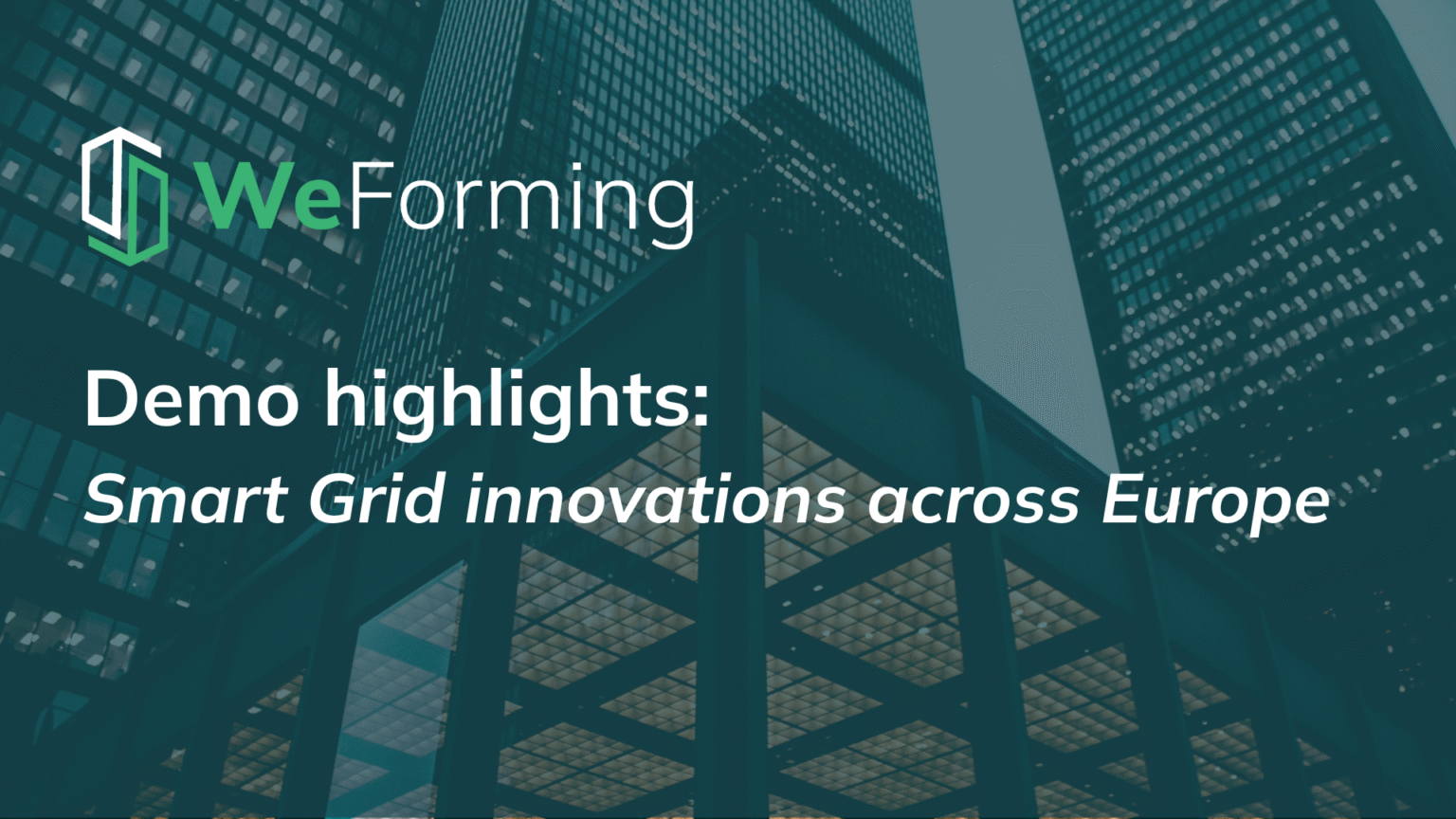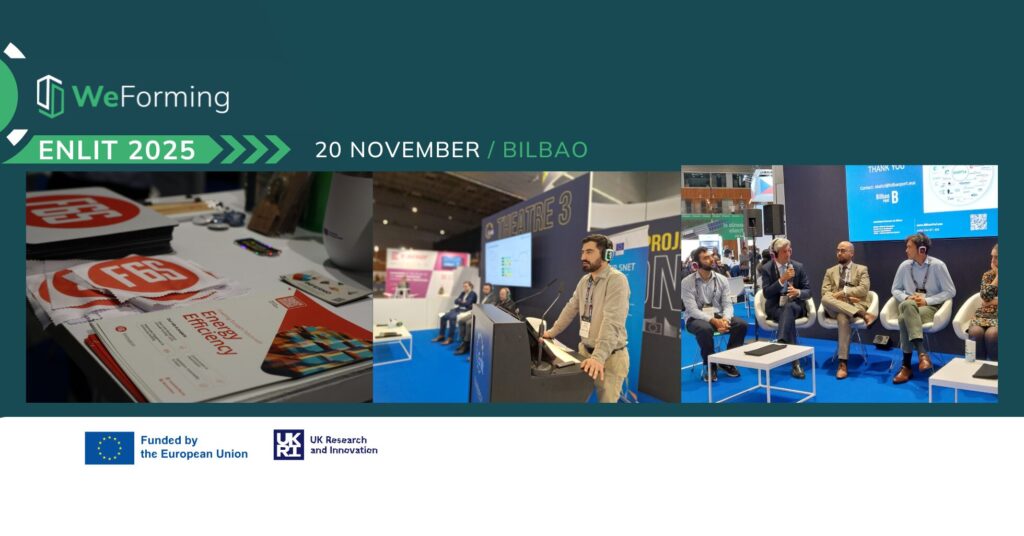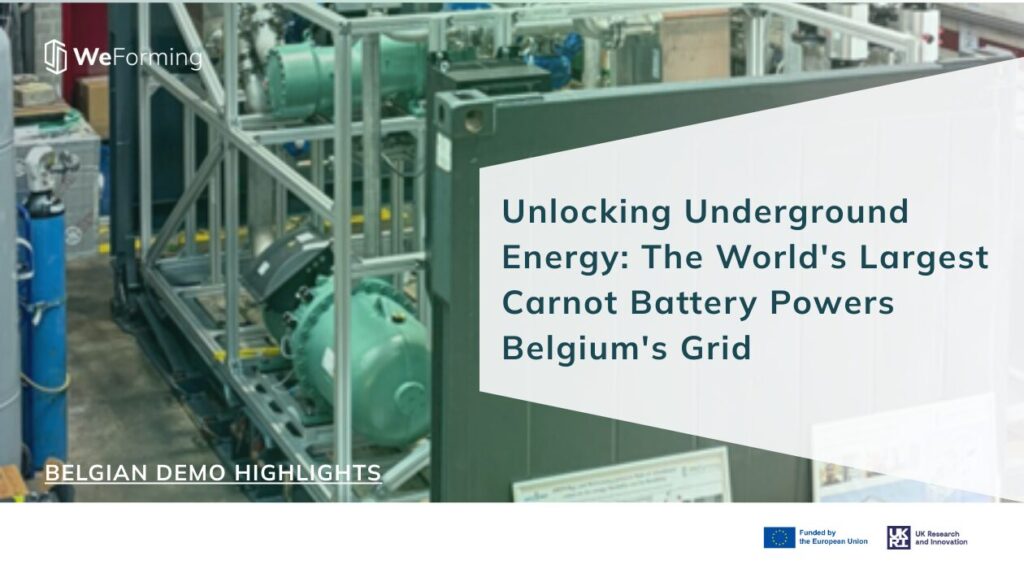Over the past 18 months, the WeForming project has been working to deploy and refine our demo sites across Europe.
These demonstrations are paving the way for the future of intelligent Grid-Forming Buildings (iGFBs), and we’re eager to share our journey with you. Don’t miss out on the latest updates as we delve into the intricacies of each demo, revealing the groundbreaking work being done to transform our energy landscape.
Contact: info@weforming.eu
Luxembourg demo: Innovative multi-energy grid-interactive district with a large fleet of EVs
This demo focuses on designing and building advanced energy hubs (1MW and 20kW) that integrate solar power (PV), battery storage (BESS), electric vehicle charging (EV), and fuel cells (FC). It also includes developing smart EV charging systems, a cloud-based framework for intelligent buildings, AI-powered forecasting and optimisation tools, and new business models for EV charging, energy intelligence, and grid flexibility. Achievements:
- We’ve completed engineering designs and simulations for a 20kW multiport power hub.
- Procurement of 1MW power hub assets, including first and second-life battery energy storage systems (BESS) and EV charging stations, is progressing well.
- We are working closely with local authorities to secure necessary permissions for installation at the Prince Henri site.
- Operational scenarios focus on enhancing energy efficiency, congestion management, and EV fleet charging as a service (EVFCaaS).
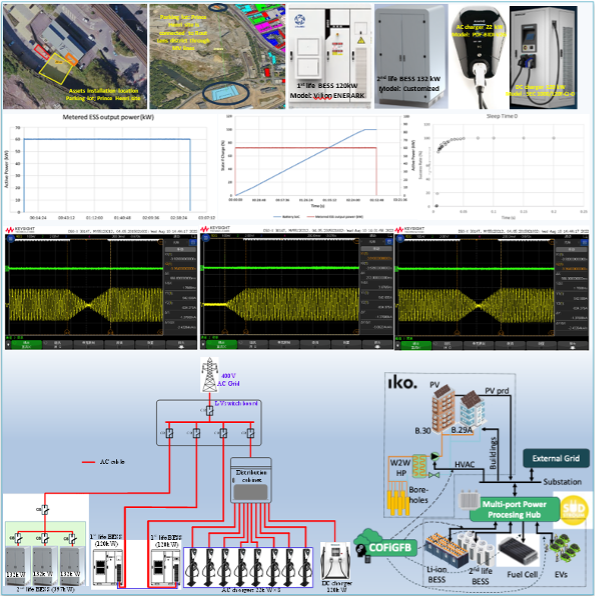

Portugal demo: Interoperable utility node consisting of a large multi-story commercial shopping
This demo aims to implement and test an AI-driven energy management system in a large Portuguese shopping mall. This system will intelligently coordinate on-site power generation (CHP), thermal energy storage (TES), and building systems (HVAC, lighting) to optimize energy use, reduce costs, and provide grid support. Key features include cloud-based management, real-time response to energy market signals, and interoperability through the W-IBRA framework. Achievements:
- Advancements in deploying an AI-powered building energy management system at Palácio do Gelo.
- Integration of 3.9 MW CHP, thermal energy storage (TES), and dynamic load control systems.
- Development of energy forecasting services, HVAC digital twins, and control optimisation modules.
- Operational scenarios focus on TES optimisation, Flexibility Trading, and Load Shifting.


Croatia demo: Grid-supporting renewable districts on a holiday island with large seasonal demand variation
The Croatian demo will take place in the Island of Krk, a trailblazer in energy transition. Krk has been an official zero-emission island since 2012 and was recognized as one of the ten EU clean energy good practices islands in the Energy Transition in 2020. As Krk is driven by strong seasonality and a part-time building fleet, this demonstrator focuses on ensuring energy transition benefits all the community, establishing new business models for local stakeholders and assisting them in activating their buildings in a democratic and inclusive manner.
Belgium demo: Interactive residential district with bidirectional power-to-heat and thermal storage capabilities
The objective is to demonstrate how a residential district can effectively interact with its environment through an electrical and thermal energy hub. In order to provide flexibility services to the grid, a massive underground thermal energy storage is also planned in the demo. Achievements:
- Advancements in developing a digital energy twin and a power-to-heat-to-power converter (Carnot Battery).
- Construction of an underground thermal energy storage system in abandoned slate mines.
- Modelica simulations are providing valuable insights into system performance.
- Development of a cloud based software platform is progressing well.
- Experimental data from existing buildings is being collected.


Spain demo: Grid-Supporting Rural Renewable Energy Community
The objective is to deploy and validate a rural renewable energy community, integrating key assets and digital solutions to enhance energy efficiency, flexibility, and traceability. Achievements:
- Commissioning of the energy community, including a photovoltaic system.
- Installation of Wibeee Box devices for detailed consumption monitoring.
- Development of a management platform aligned with WiBRA standards.
- Initial studies into energy flexibility.
- Implementation of a smart contract development environment.
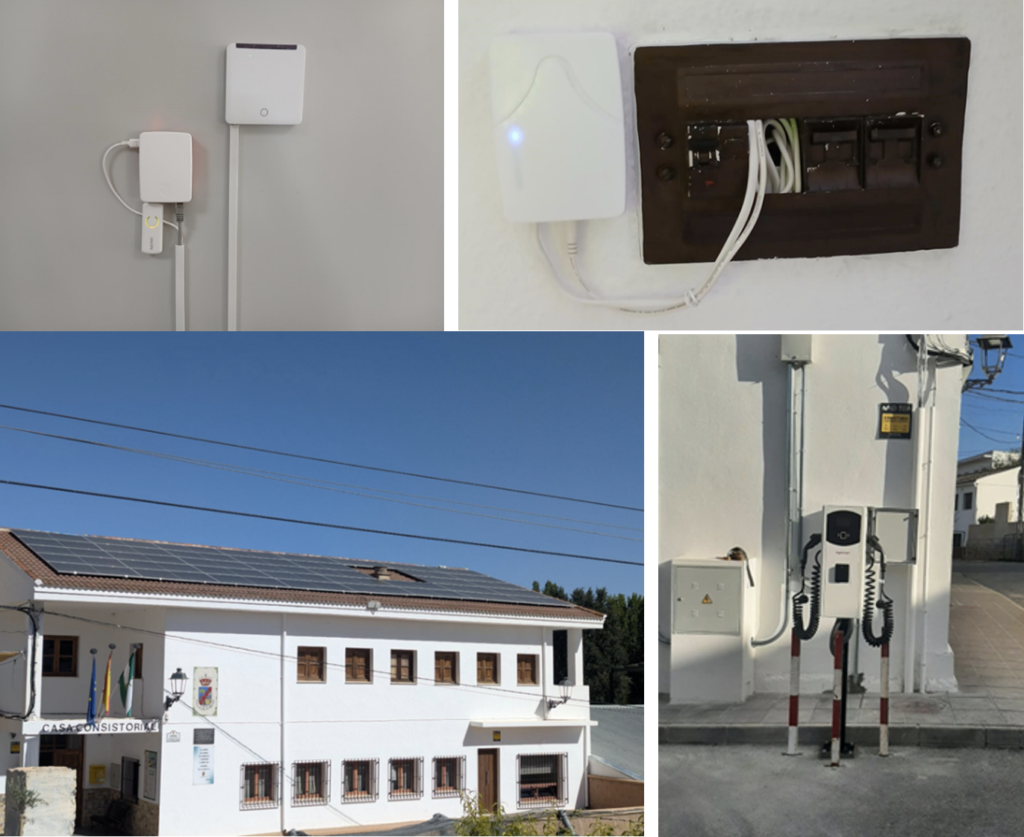

Germany demo: Energy Market-Driven Smart District
It focuses on advancing market-driven energy management across residential, commercial, and industrial buildings by integrating photovoltaic systems, battery storage, and bidirectional e-mobility services into a unified software platform. The demo aims to optimize electricity flexibility through dynamic tariffs, grid-balancing markets, and compliance with DSO limitation signals during grid bottlenecks in low-voltage grids. Achievements:
- Successful validation of bidirectional charging capabilities with various EV models.
- Implementation of FZI’s Generic Battery Optimizer for efficient energy management.
- Deployment of machine learning-based forecasting services.
- Advancements in software integration, including InnoCharge’s OCPP backend.
- Lab tests of the FCR provision have been successfully completed.


